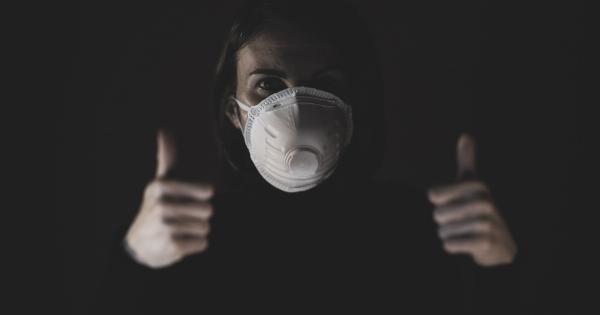Bronchitis is a respiratory condition that occurs when the bronchial tubes in the lungs become inflamed.
The bronchial tubes are responsible for carrying air to and from the lungs, and when they become inflamed, it can cause symptoms such as coughing, wheezing, and difficulty breathing. Bronchitis can be either acute or chronic, with acute bronchitis typically lasting for a few weeks and chronic bronchitis lasting for several months or longer.
Types of Bronchitis
There are two main types of bronchitis: acute bronchitis and chronic bronchitis. Acute bronchitis is usually caused by a viral infection, such as the common cold or flu, and is characterized by a sudden onset of symptoms.
Chronic bronchitis, on the other hand, is a long-term condition that is primarily caused by smoking or exposure to irritants in the environment.
Causes of Bronchitis
The most common cause of acute bronchitis is a viral infection, such as a cold or flu. These viral infections can irritate the lining of the bronchial tubes and cause inflammation.
Other causes of acute bronchitis include bacterial infections, exposure to irritants such as smoke or chemicals, and underlying health conditions such as asthma or allergies.
Chronic bronchitis is primarily caused by smoking or long-term exposure to irritants in the air, such as pollution, dust, or chemical fumes.
When a person smokes or is exposed to these irritants over a long period of time, it can lead to chronic inflammation of the bronchial tubes. This inflammation can cause permanent damage to the lungs.
Symptoms of Bronchitis
The main symptoms of bronchitis include:.
- Coughing
- Wheezing
- Shortness of breath
- Chest discomfort
- Production of mucus
- Fatigue
- Low-grade fever (in some cases)
In acute bronchitis, these symptoms usually develop within a few days and may last for several weeks. In chronic bronchitis, the symptoms are often persistent and can last for several months or longer.
Diagnosis of Bronchitis
Diagnosing bronchitis typically involves a combination of a physical examination, medical history review, and diagnostic tests.
During the physical examination, the healthcare provider will listen to the lungs with a stethoscope to check for any abnormal sounds, such as wheezing or crackling.
The medical history review will involve questions about the symptoms, their duration, and any factors that may have triggered them. The healthcare provider may also ask about smoking habits or exposure to irritants.
To confirm the diagnosis and rule out other possible causes, the healthcare provider may order certain diagnostic tests, such as:.
- Chest X-ray: This imaging test can help determine if there are any abnormalities in the lungs that may be causing the symptoms.
- Sputum culture: A sample of mucus may be collected and sent to a laboratory to check for the presence of bacteria or viruses.
- Pulmonary function tests: These tests measure how well the lungs are functioning and can help determine if there is any obstruction or restriction of airflow.
Treatment of Bronchitis
The treatment plans for acute and chronic bronchitis may vary, depending on the underlying cause and severity of the symptoms. In general, the goals of treatment are to relieve symptoms, reduce inflammation, and prevent complications.
Treatment options for bronchitis may include:.
- Rest and hydration: Getting plenty of rest and staying hydrated can help the body fight off the infection and relieve symptoms.
- Over-the-counter medications: Over-the-counter pain relievers, such as ibuprofen or acetaminophen, can help reduce fever and relieve pain.
- Cough suppressants: Cough suppressants can help relieve coughing and allow for better sleep.
- Bronchodilators: Bronchodilators are medications that relax the muscles around the bronchial tubes, making it easier to breathe.
- Steroids: In some cases, corticosteroids may be prescribed to reduce inflammation in the airways.
- Avoiding irritants: If bronchitis is caused by exposure to irritants, it is important to avoid these triggers as much as possible.
- Quitting smoking: For individuals with chronic bronchitis who smoke, quitting smoking is essential to prevent further damage to the lungs.
Preventing Bronchitis
There are several steps that can be taken to reduce the risk of developing bronchitis:.
- Avoid smoking or secondhand smoke: Smoking is a major risk factor for both acute and chronic bronchitis. Quitting smoking reduces the risk of developing bronchitis and many other respiratory conditions.
- Wash hands frequently: Frequent handwashing can reduce the risk of catching viral or bacterial infections that can lead to bronchitis.
- Avoid exposure to irritants: Limit exposure to irritants such as air pollution, chemicals, and dust. When exposure cannot be avoided, use protective equipment such as masks or respirators.
- Stay up to date with vaccinations: Certain vaccines, such as the flu vaccine, can help prevent viral infections that can lead to bronchitis.
- Practice good hygiene: Covering the mouth and nose when coughing or sneezing, and disposing of tissues properly, can prevent the spread of respiratory infections.
Complications of Bronchitis
In most cases, bronchitis resolves on its own with proper rest and care. However, if left untreated or if there are underlying health conditions, complications may arise. Some potential complications of bronchitis include:.
- Pneumonia: Bronchitis can lead to a secondary infection in the lungs, such as pneumonia.
- Asthma exacerbation: Bronchitis can trigger asthma symptoms, leading to an asthma attack or worsening of asthma symptoms.
- Chronic obstructive pulmonary disease (COPD): Chronic bronchitis can be a precursor to COPD, a progressive lung disease that causes breathing difficulties.
Conclusion
Bronchitis is a respiratory condition characterized by inflammation of the bronchial tubes.
It can be either acute or chronic, with acute bronchitis usually caused by viral infections and chronic bronchitis often associated with smoking or exposure to irritants. The main symptoms of bronchitis include coughing, wheezing, and difficulty breathing. Diagnosis involves a physical examination, medical history review, and sometimes diagnostic tests.
Treatment aims to relieve symptoms, reduce inflammation, and prevent complications, and may include rest, medications, and avoiding irritants. Taking preventive measures, such as quitting smoking and practicing good hygiene, can help reduce the risk of developing bronchitis.






























